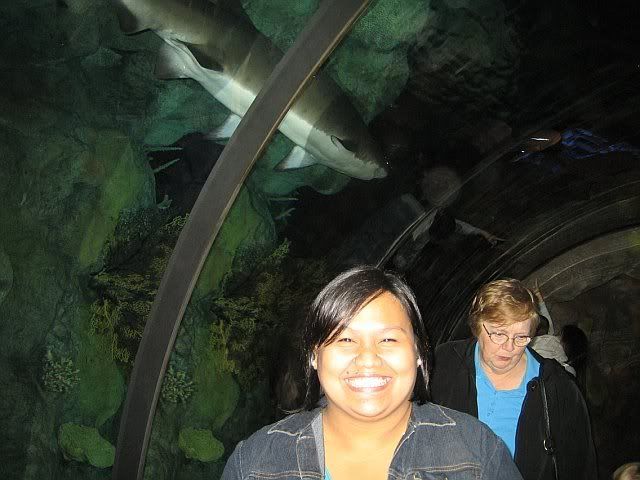 Henry Zoo, Nebraska. Investigators, paramedics, and biologists are baffled by a successful lone shark attack at Henry Zoo, where the victim was first-time zoo visitor posing for a picture. No one else was hurt, not by the shark, and not by cuts via glass shards. A portion of the aquarium facilities though had to be shutdown for repairs.
Henry Zoo, Nebraska. Investigators, paramedics, and biologists are baffled by a successful lone shark attack at Henry Zoo, where the victim was first-time zoo visitor posing for a picture. No one else was hurt, not by the shark, and not by cuts via glass shards. A portion of the aquarium facilities though had to be shutdown for repairs."There was opportunity, the suspect is the murder weapon, but we can't file anything under 'motive,'" said Police Detective Andrew Rolls. "We're not giving up though; we're going to keep digging. Forensics will tell us more."
Survivor Mona Victorio sustained deep bite marks on her right shoulder when one portion of the aquarium glass shattered, shoving Mona down with the torrent-weight of salted water, and flooding the area to waist-level. The shark took this opportunity to attack.
"Don't look at me like that, the sharks are well-fed. And they don't attack people, contrary to the norm and what we see in the movies," said Henry Zoo Administrative Head Martha Anderson. "And I think it is sounder if we characterize this as just a freak incident, rather than an actual, premeditated attack. The victim wasn't even in the water!"
But Anderson may be wrong. Security camera footages and the sequence of images found in the victim's friend's digital camera document one particular shark closely following Mona's movements.
Allison McNaughey, visitor and witness to the attack, said that Mona let out a high-pitched scream, as though bird droppings fell on her newly shampooed hair. "She rose from the water and twisted," Allison said, "and walked backwards and slammed the shark against a nearby column. It was like, a basic self-defense move. I don't think she panicked, more like she was annoyed."
"It doesn't look much now," said biologist and Henry Zoo staff member Gordon Shumsky, referring to the crushed shark. She [Mona] must have been really pissed."
"Of course it was premeditated," said National Geographic Biologist Ameron Diaz. "The digital camera images show a pattern of stalking, which is characteristic of sharks when they have decided a prey is worth attacking."
"Hello! Like I would know what that shark would want with me. There were several of us near the glass wall posing," said shark victim Mona Victorio when a resident FBI agent started asking her questions. "But I do have a grandaunt that was attacked by shark and survived."
"That's it," said Detective Rolls. "We got motive."
"But that," cut in Zoo Admin Head Anderson, "doesn't explain why a bystander nearer to the protective glass than the victim was not attacked." Rolls and Anderson had been heatedly arguing in front of reporters, the shark victim, and the crushed shark.
"I think I can explain," said the biologist Diaz. "There's a theory that certain memories are passed on via genes, which is why cats try to scratch the marble floor in a gesture much like covering one's pee with dirt. Here, the first shark perpetrator survived, remembered the first victim's features, and passed on that hate. That shark you have in captivity, I am willing to bet, has its family traceable to the victim's homeland."
Meanwhile, a former-model turned paramedic treating Mona the victim said, "I don't really buy that genetic vendetta theory. The bites aren't that deep to suggest spite and malice."
"Sabi ko nga," said Mona in her vernacular language.
"What did you say?" asked six foot tall, tanned Mark Rosewater, a literature major who paid for his schooling by modeling, and then took up medical training.
"Oh hah? I said I was single," said a beaming Mona, not minding the multiple puncture wounds on her shoulder.
Authorities said the shark cadaver will be examined under close FBI scrutiny. Meanwhile, all sharks at the Henry Zoo are scheduled for scientific family tree mapping, to prevent and preempt further attacks to visitors.



